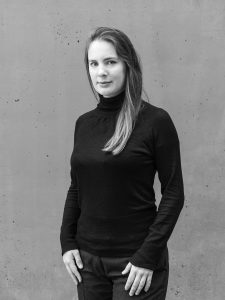Katharina Rotté

Shortbio
- Studies in Rhetoric, International Literatures, Renaissance Studies, Art History / Tübingen, Rome, Florence, Bonn
- 2014 B.A. in International Literatures and Art History
- 2017 M.A. in Art History
- 2017–2019 Graduate Assistant at Deutsche Stiftung Denkmalschutz / Bonn
- 2019–2023 Research Associate at the DFG-Rtg 2227 “Identity & Heritage” / Weimar
- 2023 Lecturer at the Technical University / Berlin
- 2019 12-month Travel Grant DAAD – German Academic Exchange Service / Italy; 2021 Fellowship Herzog August-Bibliothek – Research Institute for European Cultural History / Wolfenbüttel; 2023 James Loeb Fellowship at Zentralinstitut für Kunstgeschichte / Munich
Contact
Bauhaus-Universität Weimar
Fakultät Architektur und Urbanistik
DFG-Graduiertenkolleg 2227 „Identität und Erbe“
D-99421 Weimar
katharina.rotte[at]uni-weimar.de
The Travertinisation of Urban Rome c. 1466–1546
Travertine is a mostly light-coloured limestone that obtained its name from the quarries of Tivoli. Most of Rome’s cityscape-defining buildings exhibit this natural stone. This is why it is frequently referred to as the Roman stone ‘par excellence’. Travertine use in urban Rome since the Roman Republic shows cyclical booms and troughs. In my doctoral project I examine a period of upswing from the second half of the 15th to the first half of the 16th century, shortly before the baroque heyday of travertine-clad church façades. The central research interest of my thesis is the historical processes that made travertine the most sought-after building material in Renaissance Rome. The success of this natural stone was fostered by many factors, such as advancements in building logistics and the study of antique architecture. I explore these different factors and their material consequences by analysing a variety of artefacts and discourses related to travertine.